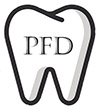
Many patients are unhappy with the appearance of their teeth. One of the most common complaints is an abnormal tooth discoloration. The condition can be caused by many factors and is typically treated based on its severity and patient’s expectations. Most frequent internal or external reasons for darkening of the teeth include the following:
Genetics
The genetic make-up usually determines the shape and the color of the teeth. Genetically affected teeth erupt with a grayish or yellow hue also showing signs of translucency. As the condition is inherited, it may affect both primary and permanent teeth.
Medication
Drug-induced staining typically occurs during the childhood while the dentition is still in its developmental stages. Antibiotics such as tetracycline may cause permanent discoloration often seen as dark horizontal lines across the facial surface of the teeth.
Trauma
Traumatic events, such as fall or hit to the mouth may cause internal changes of the nerve tissue that becomes necrotic. As the nerve dies, the shade of the tooth changes causing permanent discoloration. Additionally, root canal treated teeth also darken over a period of time in the same fashion.
Tooth Decay
Poor oral hygiene and other factors may lead to the formation of cavities. Left untreated, the caries become rampant, and may require extensive dental treatment.
Deteriorated Dental Restorations
Over time, some dental restorations may fracture allowing the bacteria to invade the tooth causing decay and staining. In addition, some dental materials, such as amalgam (silver) fillings may project a dark shadow through the existing enamel causing the appearance of discoloration.
Surface Staining
This type of staining is external, and it does not affect the color of the tooth. However, it produces a discolored layer over the enamel due to the accumulation of the debris, such as plaque and tartar. It is often caused but certain food, beverages and smoking.
Treatment Methods
Depending on the type of stating, the present condition of the tooth and available treatment techniques, most dental staining can be successfully corrected with incredible results.
Perhaps the easiest and most common is the removal of surface staining with regularly scheduled prophylactic cleanings followed by an excellent oral care at home and dietary changes.
Minor staining can be approached by the method of tooth whitening with an initial in-office visit with the dentist and continued by patient at home. The process is monitored with periodic evaluations performed by the dentist until the desired results are reached.
The compromised dentition, which cannot be restored with the above methods, often benefits from the placement of porcelain laminate veneers. These beautifully sculpted restorations fully rehabilitate the aesthetics of the teeth and reinforce the tooth structure.
